This unique, peanut-shaped country, once known as Northern Rhodesia, offers visitors an authentic African experience complete with adrenalin pumping adventure sports, a variety of fascinating cultural activities, and an abundance of indigenous wildlife, which finds refuge in Zambia’s vast national parks. Spend your evenings enjoying the spectacular site of the world’s largest waterfall, the Victoria Falls, while sipping on sundowners after an exhilarating day of whitewater rafting down the rapids of the mighty Zambezi River. If that sounds a little too adventurous for your taste, take a houseboat cruise along the exquisite Lake Kariba while watching wild elephants drink at the riverbank as you try your hand at catching the elusive tiger fish. However you choose to spend your time in this unique country, you are bound to leave with a heavy heart and a desire to return again soon to this exceptionally beautiful Southern African country.
Lusaka, Zambia’s cosmopolitan capital, is a typical modern African city. Set on open plains at the heart of the country, northeast of the capital, the city serves as Zambia’s rapidly developing economic and transport hub with new buildings popping up everywhere and many chain stores and shopping malls springing up all over the sprawling suburbs. Lusaka’s wide, tree-lined boulevards feature a range of tourist facilities including hotels, guest houses, coffee shops, fast food outlets, nightclubs, and pubs. Visitor attractions include the Henry Tayali Gallery, showcasing local artworks; The National Museum, covering Zambia's colonial history; the Lilayi Elephant Orphanage; and a number of colourful markets. Don’t miss the popular Munda Wanga Environmental Park where you will find a Wildlife Park and Sanctuary, Botanical Gardens, Recreational Village, and an Environmental Education Centre.

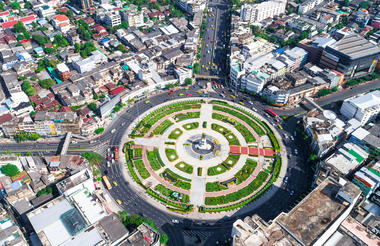

The name ‘Chirundu’ roughly translates to 'people following one another in a queue' which hints at this settlement’s primary function as a major border crossing over the Zambezi river between Zimbabwe and Zambia. Wild animals, including elephants, are frequently spotted wandering around the town, apparently unconcerned by the presence of people. Tourists typically make use of Chirundu as a gateway to the nearby Chirundu Petrified Forest and the area’s numerous game reserves including the world-renowned Mana Pools National Park. However, those who linger will find excellent sport fishing opportunities and several fishing camps which welcome visitors and offer boats for hire. On the Zambian side of the river is a slightly smaller town also called Chirundu.
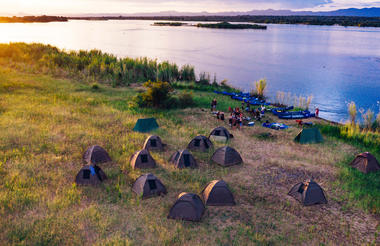


Located in the Petauke District of Zambia’s Eastern Province, about 400 kilometres from the country’s capital of Lusaka, the tiny farming town of Petauke is a scenic destination which functions well as a base for exploring. The landscapes are characterised by vast open plains, wild bushlands, and the breathtaking North and South Luangwa National Parks. The parks, offering arguably the best wildlife-viewing experiences in the country, are filled with an impressive array of rare and endangered animal species and provide some phenomenal photographic opportunities. Travellers visiting Petuake can look forward to strolling the atmospheric streets of Petauke, sampling an array of delicious and unique local Zambian cuisine, learning about the ancient cultural traditions of the Nsenga people, and browsing the lively town market.
Bordering the Luangwa River, the northern and southern Luangwa National Parks contain some of the most breathtaking and untouched wilderness in Africa. As a result of this and the parks’ successful anti-poaching campaigns, the area has developed into a world-renowned wildlife haven. The South Luangwa National Park is renowned for its walking safari, which allows visitors to view elephant, hippo and even lion close-up under the supervision of professional and knowledgeable armed guides.
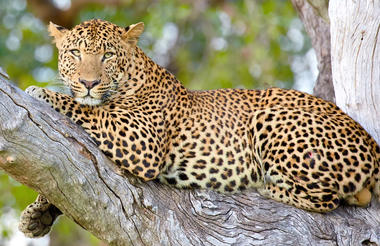
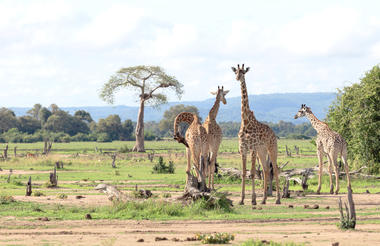
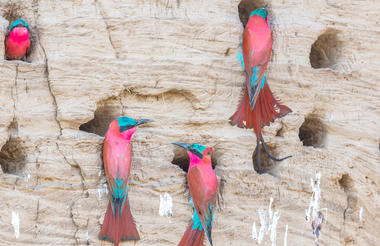
Dubbed the 'Warm Heart of Africa' for its good-natured charm, the tiny, landlocked country of Malawi in southeastern Africa is a famously hospitable little nation brimming with touristic abundance. Its exuberant landscape is a breathtaking natural kaleidoscope of verdant countryside, sweeping plateaux, soaring highlands, and river valleys. Malawi's share of the vast Great Rift Valley encompasses the country's must-see eco-destination, the emblematic Lake Malawi, several national parks and game reserves, while the Central African Plateau's undulating terrain is defined by a series of dramatic escarpments, punctuated by lakes, dramatic hills and dense forests. A wealth of outdoor activities is open to outdoor enthusiasts, including hiking, swimming, scuba diving, snorkelling, water skiing, sailing, kayaking, parasailing and boating. Game viewing at the reserves offers a chance to see crocodiles, lions, elephants, hippos and leopards. For the more culturally curious, browse the many bustling markets, visit traditional villages and dig into the treasure trove of the country's history at The Society of Malawi in Blantyre.
At 1,050 metres above sea level in Malawi's central region, Lilongwe bridges traditional and modern Africa within its dual cityscape. The Old Town, characterised by bustling markets, small shops, and historic golf clubs, contrasts sharply with the organised structure of the New Town, a hub of embassies, government ministries, and modern infrastructure. Lilongwe's lush green spaces, particularly the Lilongwe Nature Sanctuary, provide an urban oasis that rehabilitates injured animals while promoting environmental education. The Kamuzu Mausoleum, built of marble and granite, is the final resting place of Malawi's first president, with pillars bearing his principles of unity, loyalty, obedience, and discipline. The Parliament Building, located near Capital Hill, houses the government's operations and is an example of modern Malawian architecture. Other sights worth seeing include a day trip to the Kumbali Cultural Centre, offering the opportunity to view traditional Malawian dancing and drumming, as well as an excursion to Chongoni Rock Art Area featuring one of the densest clusters of rock art in Central Africa.



The town of Mulanje lies at the base of Mount Mulanje, Central Africa’s highest mountain and the gateway to its trekking trails. This giant massif measures over 3 000 metres at its pinnacle and covers more than 500 square kilometres. Many trails, ranging from leisurely strolls around the lower slopes to strenuous climbs up its peaks, are available to nature lovers and adventure seekers alike. There are pools, waterfalls, granite gorges, and ancient cedar forests along the trails, with trees standing as tall as 30 metres. You will also encounter rich wildlife such as Dwarf Chameleons, Forest Butterflies, antelope and myriad birds. Besides being a hiking Mecca, Mulanje is surrounded by lush tea plantations that can be explored on a guided tour. Although surrounded by vast natural scenery, this quaint town is easily can be accessible from the city of Blantyre.
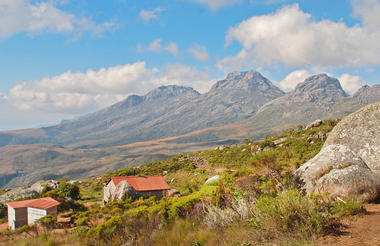

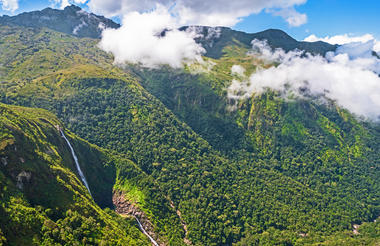
Liwonde National Park is situated at the southern tip of Lake Malombe in southern Malawi. Although Liwonde is a smaller park, it is arguably the most popular of all the game parks in the country. Malawi’s main river, the Shire, forms its western boundary and is the reserve’s lifeblood. Boasting plenty of animals including hippos, kudu, elephants, crocodiles and elephants, and even black rhino, the park has become one of Malawi's premier wildlife-viewing destinations. The birding opportunities here are excellent and a favourite sighting among birdwatchers is the Pel’s fishing owl. Visitors can look forward to a wide selection of activities including canoeing, sublime boating safaris, and excellently positioned camping spots. The area is also incredibly photogenic, with its lush Borassus palms, Impala lilies, and abundant wildflowers blooming after the rains.
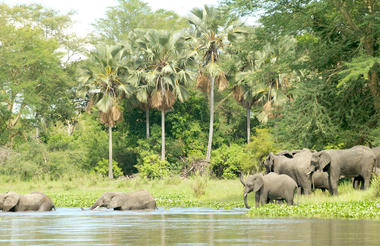
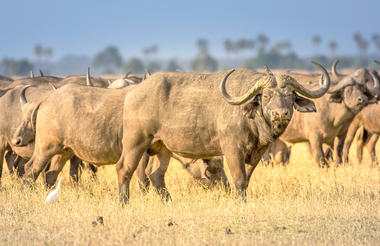
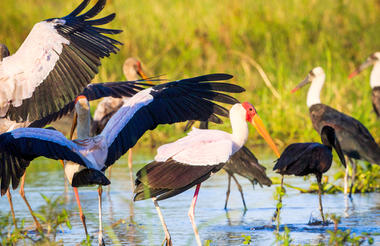
Mumbo Island is an ecotourist’s dream. Measuring just one square kilometre across, this remote islet is virtually uninhabited and covered with pristine miombo forests interspersed with ancient fig and baobab trees. It is surrounded by the calm, crystal clear waters of Lake Malawi, where you can swim and snorkel amidst schools of vividly coloured tropical fish. You may also encounter the island’s sole mammal inhabitant - playful and curious Spotted-necked Otters. The only resort on the island is built from sustainable natural materials that blend beautifully into the pristine surrounds.






